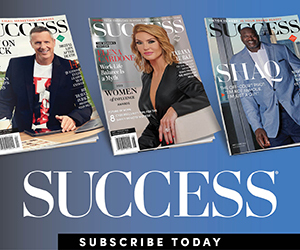You’ve optimized your resume. You’ve jazzed up your LinkedIn profile. Maybe you’ve even played with AI enough to know you are still a better cover letter writer. But in spite of all this, maybe you haven’t landed that job you’ve been searching for. Some economists and career experts are predicting that September might be your month to change that.
While statistically the start of the new year brings with it the hottest months to get hired, September is looking like a potential second choice, with employers heading into the holiday season, potentially needing more help and coming off the summer lull.
What is the September Surge?
“September Surge refers to that time of year after Labor Day where we see increased hiring in September and October. It’s short lived, not quite two full months,” says Alice Rush, a certified career counselor at the University of Phoenix with 25 years of experience. “It’s a big recruitment time for hiring because companies that were closed for summer months and vacation lulls are getting geared up for new initiatives in fall before year-end, and companies that hire seasonally are ready to hire before the holidays.” As Rush points out, the September Surge won’t last long, so it’s important to get prepared now.
Tramelle D. Jones, a strategic success & workplace wellness coach with TDJ Consulting, agrees. “Most companies go on a hiring freeze or slow hiring near the end of October. November and December tend to be the months that most employees take vacations, meaning they don’t typically have the manpower to onboard new employees as effectively as they would starting the first week of January when everyone returns to the office.” She adds that October 31 is also the end of the fiscal year for many organizations, so some companies go into “use it or lose it” mode with leftover funds they can use in HR. “This means September becomes two things: a rush to hire and a rush to onboard.”
Corporate recruiter and career consultant Chanelle Howell recently recorded an Instagram video encouraging job hunters to get on it: “It’s the middle of Q3… be ready. Have your resume ready to go. Have your LinkedIn fully optimized so that recruiters can easily find you, and the algorithm pushes your profile to the top.” Here’s how experts recommend preparing.
How to prepare for the September Surge to land that job
You think your resume is ready? Give it one more look.
While you might have the prettiest template and even some serious career accomplishments, career coaches have some must-try tips for optimizing your resume to catch an employer’s attention during the September Surge.
Prove it!
Data speaks louder than subjective summaries of your work. Jones recommends using numbers to quantify how well you did at something. “A great example of this would be, instead of stating that you took calls at the front desk, explaining that you fielded 250 calls each week as the first point of contact for the organization,” she says, adding that this is more impressive and communicates how well equipped you are to take on a task. It also helps future employers see how well you expect to be compensated.
Pay attention to the top
Just as you skim and scan news stories, briefs and other documents, so do employers. Jones says make sure your best accomplishments are front and center—at the top of the resume. Don’t send them on a “treasure hunt” to find the most important hidden gems about you, she says. Don’t forget to compile your best attributes or key takeaways in a summary section at the top, or in a core points section.
Reconsider what an employer (not you) cares about most
Sure, you won a company award that’s been sitting on your shelf proudly—great job! But does that award align with the job you would be doing at the new company? If not, it’s time to look at your resume with fresh eyes, as if you are that employer scanning for specifics that prove you are the best fit.
“Maybe it’s too niche to the organization or an industry, but the item doesn’t have broad significance. Instead, applicants should make sure that every point on their resume directly aligns with the needs of the employer,” says Cristin Downs, a New York City-based executive coach who specializes in career pivots.
She says to research 10-12 job postings in your preferred role to see what matters. Focus on job duties, skills, qualifications, personal qualities and necessary software. “Include what they care about and remove everything else. You want them to scan your resume and say, ‘Yes, yes, yes, okay, bring her in,’” she says.
Convince them you are results-oriented
Answer these three questions in your resume to ensure you are showing that having you on their team will mean results, Downs says:
1. Did you increase something positive? Number of leads or applications, calls returned in a day or a week, client upsells, etc.
2. Did you decrease something negative? Missed appointments, negative Google reviews, client cancellations, etc.
3. Did you improve a process that resulted in a clear desired outcome? For example, adjusting a communication plan resulted in increased participation or engagement.
Dedicate a weekend to a LinkedIn profile overhaul
For some job seekers, LinkedIn is a fun place to hang out and network. For others, it’s a bit intimidating. After all, how do you optimize your profile and control the algorithm as Howell suggests? Here’s what our experts recommend doing—and they think you should do it soon if you want to be a part of the September Surge.
Tell the same story on your profile and your resume
Downs says that if a recruiter heads to your profile before or after an interview, they should see the same story told there, with matching education, credentials, organizations and more. The activity on your profile should also show that same story and set of priorities.
Change the narrative if you are changing industries
If you are seeking a different type of job or switching industries, your LinkedIn page shouldn’t reflect your old life, Downs says. “A makeover is in order to tell your new story. But again, no one is searching for you! Keyword-focused optimization is not your best strategy. Instead, you have to focus on your transferable skills and experience so you make sense when your prospective employer checks you out.”
Integrate visuals in a way your resume cannot
There’s a reason employers might head to LinkedIn when they’ve already seen your resume: They want more proof that you are a fit. Visuals are the perfect way to give them this. Instead of reading about you leading a team or presentation, maybe they see an actual picture or video of this, or a testimonial from someone there in a visually appealing format. “Get and give recommendations so people can see your interpersonal skills in a tangible way. Share your opinion about what’s happening in your industry and engage with other experts so employers can see your authority,” Downs recommends.
Use AI as a starting point, but not in place of your own ideas
It’s tempting to just drop a job description into ChatGPT and let it do the work for you when you are working on your LinkedIn profile. But Nikki Innocent, a New York City-based career coach, says this is a mistake. “Many of my clients use AI, like ChatGPT, to give them a first draft by copy/pasting the job description into the platform and asking it to map to the relevant information from their resume which is also then copy/pasted,” she says. Tweak cover letter copy that AI generates to ensure it’s in your voice as well, she adds.
Jump into industry conversation around innovation
It’s time to get chatty with other industry members, in the field you want to pursue. If you are sharing and commenting on the newest innovations in that field, you will look more involved, progressive and valuable to employers. “Highlight an article about modern talent practices that help foster innovation and pull out your favorite tip, add something that’s missing or offer a differing perspective showing your style, unique way of problem solving or any other ways you’d make a mark by showing up as authentically yourself,” Innocent says.
Select this setting if you don’t want your current employer to know you are looking
It can be hard to use LinkedIn if you are trying not to be obvious that you are on the hunt, so as not to jeopardize your current employment in the short term. So, Arrisan Nicole, career and resume coach in Seattle, says to select “Recruiters Only” in your job preferences section. “Job preferences will let recruiters know what you are looking for. You can share the job titles you want, location types, start date and employment type.” From there, she says to follow companies you are interested in working with. Under “Application Settings” in the jobs tab, you can upload your resume and have your resume data shared with recruiters as well, she adds. This can help keep your information and relevant achievements in the front-running for prospective employers during the September Surge.
Say cheese
It’s probably time for a new headshot. You can access free headshots at some college career centers, such as your alma mater, or ask a friend who has some photography experience or pay for a professional photoshoot.
“Use a good quality photo for your profile that is easy to see—a headshot, or photo of just you, with your face centered in the frame, and add a background photo that is eye-catching as well,” says Ann Runkle, a career coach in St. Charles, Illinois.
Fill out every section
This isn’t the time to skimp on completing each section. Melissa Miller, founder of BlueOwl Career Prep + Advising for Gen Z, provides this checklist:
- The ‘About’ section is important: Focus on your professional experience, but also make yourself relatable and personable. You can humanize your profile by mentioning an outside-of-work interest here.
- ‘Featured’ section: Add media, articles, links, case studies or even a resume that relate to what you have accomplished professionally. This is where you reinforce your personal brand.
- The ‘Activity’ section is where you can demonstrate engagement professionally and on the platform by posting, commenting, connecting and sharing.
- ‘Experience’ section: Use bullet points to define your job responsibilities, and always try to include the logo (if the company has a company LinkedIn page). For small companies, make sure to share what the company does, highlight accomplishments with metrics when relevant and make sure to include enough detail so employers can understand what you have done. This section should align closely with the resume experience section.
- ‘Education’ section: Be transparent and make sure the name of the school is correct.
- ‘Licenses & Certifications’ section: List only relevant licenses. For example, if you are in finance, adding the Series 7 license is a way to showcase your knowledge and achievements.
- ‘Recommendations’ section: This section is a great place for increased visibility and searchability. It can serve as a reference to prospective employers.
Be easily accessible
So they love you, and they want to talk to you ASAP. Is it easy to access you in the way that’s most convenient for them? Annette Garsteck, a Hudson, Ohio-based career reinvention coach who empowers women, has more than 20 years of experience as a leader in training and customer service at global Fortune 500 and world-class healthcare firms. Her recommendation is to make your phone number, email address and resume are easily accessible, and hyperlink as many details as possible. Finally, she says not to make employers guess about your skills—you can currently add up to 50 options.
With these tips, you will be ready to interview as the September Surge begins.
Photo by 1897M@rden/iStock



